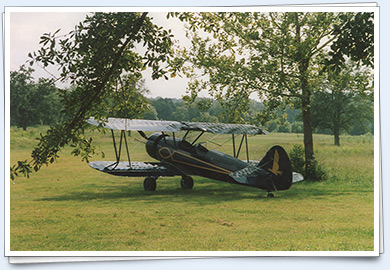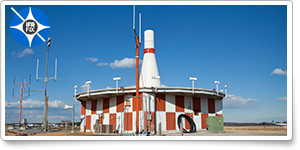Sept. 21, 2012, issue of 'AOPA ePilot: Flight Training Edition' weekly newsletter
| ||||||
| The three axes |
| |||||
Training TipsThe three axes
When visualizing (or explaining) these motions of the aircraft, think of your control inputs as inducing aircraft response around an appropriate axis. Take that stall that has begun to progress toward a spin. There is rotation around the vertical axis (sometimes referred to as the yaw axis). That is why applying full opposite rudder (not aileron) is the crucial element of a standard spin recovery.
“The axes of an aircraft are three imaginary lines that pass through an aircraft’s center of gravity (CG),” explains Chapter 4 of the Pilot’s Handbook of Aeronautical Knowledge. “The axes can be considered as imaginary axles around which the aircraft turns. The three axes pass through the CG at 90-degree angles to each other.”
The names of the three axes lend clarity to ground discussions of a maneuver. “The axis from nose to tail is the longitudinal axis, the axis that passes from wingtip to wingtip is the lateral axis, and the axis that passes vertically through the CG is the vertical axis,” the chapter explains. “Whenever an aircraft changes its flight attitude or position in flight, it rotates about one or more of the three axes.”
Movement around one or more of the axes is essential to the operating principle of your trainer’s gyroscopic instruments. This Flight Training article explains how those instruments harness gyros spinning in various axes to present information to the pilot.
Does your trainer have a turn coordinator, or a turn-and-bank indicator? Differences in how their gyros are aligned relative to the longitudinal axis give one of them more sensitivity.
Which one? Peruse this “What it looks like” column for the answer. Flight Training NewsWorking group to offer training reformsA committee advising the FAA on ways to enhance flight safety with improved training and testing materials has established a working group to propose initial revisions and reforms by September 2013, with the aviation-training industry playing a major role in the project. Read more >> EAA Young Eagles get enhanced training toolsSporty’s is offering an upgraded version of its online Learn To Fly course available free of charge to youths who participate in the Experimental Aircraft Association’s Young Eagles program. The modular course focuses first on the solo, and then lets users choose whether to pursue a sport, recreational, or private pilot certificate. When they conclude the solo component, all Young Eagles will receive a free first flight lesson voucher from EAA. The association said it will also reimburse the cost of the FAA knowledge test for those Young Eagles who have used Sporty's Learn To Fly course. More than 15,000 young people have already accessed the course, Sporty’s said. Summit advance registration extended to Oct. 1The early registration discount for AOPA Aviation Summit Oct. 11 through 13 has been extended to Oct. 1. Register by then to receive special offers and discounts. Read more >> Thinking about buying an airplane?Thinking about buying your first airplane? Wondering if ownership is for you? Are other options out there that are more budget-friendly than renting? Bring all your questions to the October Flight Training Facebook chat on Oct. 2 at 3 p.m. Eastern. AOPA Pilot Editor in Chief Tom Haines will discuss the pros and cons of ownership as well as flying clubs and other possibilities. One participant will receive AOPA’s limited-edition “Plane Crazy” T-shirt. To participate in the chat, go to the Flight Training Facebook page and click on the chat link. You can also sign up for an email reminder of the upcoming chat, or view transcripts of previous chats. Runway rules 101In order to take off from a runway, the first challenge is knowing how to actually find it. After all, sometimes the most complex part of a flight is navigating an unfamiliar airport. Use the Air Safety Institute’s Runway Safety Flash Cards to better understand runway signage and markings. The front of each card displays an airport sign or pavement marking, while the back provides a description and information on the required pilot action. Aviation career event slated for Midwest studentsAn aviation career day aimed at high school students will be held on Oct. 3 at Duncan Aviation’s facility at Lincoln Airport in Lincoln, Neb. The event runs from 9 a.m. to 3 p.m. and is open to students from Iowa, Kansas, Missouri, and Nebraska. Students will get the opportunity to explore careers in aviation and visit with representatives from the FAA, aviation colleges and universities, and others. For more information, see the website. Training ResourcesIf you find yourself grounded by weather, your schedule, or other intrusions, you can keep your head in the game by reading every aviation article you can find, or using a desktop simulator to practice basic and instrument flying skills. Research and plan trips to future destinations with AOPA Airports, the association’s airport directory, and the AOPA Internet Flight Planner. Also, be sure to visit the Air Safety Institute home page for free interactive courses, Safety Advisors, quizzes, and a schedule of safety seminars in your area.
Did you know that student pilots who join AOPA are three times more likely to complete their flight training? Membership includes unlimited access to aviation information by phone (800/USA-AOPA, weekdays from 8:30 a.m. to 6 p.m. Eastern time) or from Flight Training Online or AOPA Online. If you’re not already a member, join today and get the pilot’s edge. Login information is available online. Ask ATC: When to change to ‘standby’ Career PilotAmerican pilots’ contract tossed; maintenance base to closeA federal judge threw out the contract covering American Airlines’ pilots on Sept. 4, clearing the way for the bankrupt airline to reduce its pilot payroll. The Associated Press called the move “a major step toward emerging from bankruptcy” for the carrier that accelerates the Chapter 11 bankruptcy reorganization that many expect could end in a merger with the US Airways Group. American spokesman Bruce Hicks said that the company still wants to negotiate a new contract with the pilots. The carrier will close its maintenance base at Alliance Airport in Fort Worth, Texas, eliminating nearly 1,110 jobs by mid-December, the Dallas Morning News reported Sept. 10. Work done at Alliance will be transferred to maintenance bases at Tulsa and Dallas/Fort Worth International Airport, or outsourced. Tulsa, the carrier’s largest maintenance base, will lose 993 jobs. FAA approves first airline to use iPads in all flight phasesAmerican Airlines announced Sept. 10 that it is expanding its iPad electronic flight bag program after becoming the first commercial carrier to receive FAA approval to use the Apple iPad in the cockpit during all phases of flight. “With this approval from the FAA, we will be able to use iPad to fully realize the benefits of our Electronic Flight Bag program—including improving the work environment for our pilots, reducing our dependency on paper products, and increasing fuel efficiency on our planes,” said Capt. John Hale, American’s vice president—flight. The carrier said an EFB reduces or replaces paper-based reference material and manuals often found in a pilot’s carry-on kitbag. Removing the 35-pound kitbag from each American aircraft will save an estimated $1.2 million of fuel annually based on current fuel prices. Plane SpotterDarter Commander: A rare bird that commands attention
CORRECTION: In the Sept. 14 issue of ePilot Flight Training Edition, we incorrectly illustrated the Citabria. The Citabria, as pictured here, can be distinguished from its cousin the Decathlon by a smaller air intake and a more cambered wing. Training ProductsASA updates multiengine exam guideASA’s Multi-Engine Oral Exam Guide has been updated to include the latest regulations, procedures, and technology. The guide uses a question-and-answer format and provides succinct responses to the questions that designated pilot examiners are most likely to ask, according to ASA. Following each question is a reference to the specific FAA source from which the answer is derived. The book can be purchased in soft-cover version at $12.95 or as an e-book at $9.95. See the website to order or call 800/272-2359.
Note: Products listed have not been evaluated by ePilot editors unless otherwise noted. AOPA assumes no responsibility for products or services listed or for claims or actions by manufacturers or vendors. Member BenefitsHurricane preparation: Keeping you coveredWith hurricane season under way, AOPA members who live or plan to travel in hurricane-prone areas should have a plan to relocate their aircraft in the event of a storm. While developing your plan, check your insurance policy to see if it covers any costs for relocating your aircraft. Some policies cover the cost of hiring an evacuation pilot, and relocating and storing an aircraft. Other policies will reimburse policyholders for relocating their aircraft outside of a hurricane watch or warning area. Read more >> ‘What, me worry?’Alfred E. Neuman, the gap-toothed icon of Mad magazine, wasn’t a pilot. “It will never happen to me, so why should I worry?” We pilots don’t approach our flights in such a cavalier manner. And, as Dr. Jonathan Sackier points out, we should treat our health in the same fashion: by planning, preflighting, and staying ahead of problems. Read more >> BlogsDumb things pilots have done, Part IIn more than 20 years of flying, professional pilot Chip Wright has seen his share of goofs from the pilot community. In part one of a two-part blog, he tells the Flight Training blog some of his favorites, including a Cessna 152 pilot who tried to leave but couldn’t, and an airline captain who left when he shouldn’t have. One step closerStudent pilot Kristen Seaman passed her private pilot knowledge test with flying colors. She shares her strategy for effective studying and earning a high score in the Let’s Go Flying blog. AOPA Career OpportunitiesEver dream of turning your passion for aviation into a career? We’re looking for a director of media relations, director of legislative affairs, major gifts officer, accounts payable technician, aviation technical generalist, and Web graphic designer. To learn more about other AOPA career opportunities, visit AOPA Online. Community
AVIATION EVENTS & WEATHER
| ||||||||||||||||||||||||||||||||||||




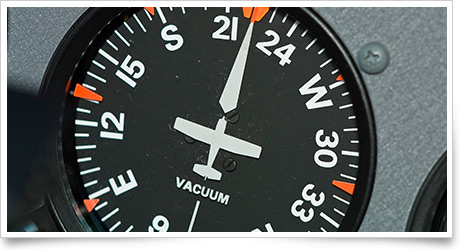 A student pilot learns that an aircraft is capable of three kinds of motion:
A student pilot learns that an aircraft is capable of three kinds of motion: 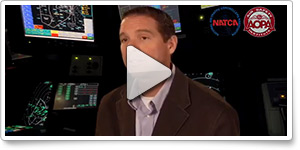
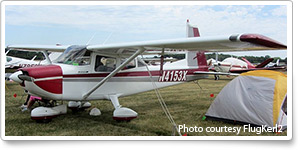 When you see one for the first time, you may be tempted to ask the airplane’s pilot why the tail of the Skyhawk is on “backward” (like a Mooney). But a confirmed plane spotter will not be fooled. Just when others on the ramp are scratching their heads, go ahead and explain that this airplane isn’t a Cessna. It’s a rare example of a 150-horsepower North American Rockwell Darter Commander (AC-100-150) built in the 1960s and early 1970s. There are also some
When you see one for the first time, you may be tempted to ask the airplane’s pilot why the tail of the Skyhawk is on “backward” (like a Mooney). But a confirmed plane spotter will not be fooled. Just when others on the ramp are scratching their heads, go ahead and explain that this airplane isn’t a Cessna. It’s a rare example of a 150-horsepower North American Rockwell Darter Commander (AC-100-150) built in the 1960s and early 1970s. There are also some 